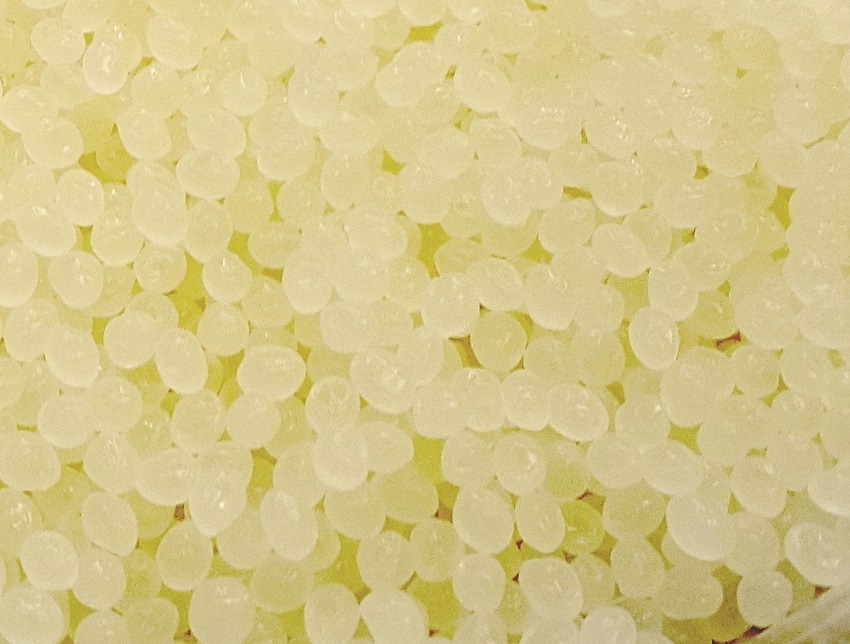In keeping with the increasing demand for sustainable and environmentally friendly materials, Goodfellow are pleased to announce a major expansion of their range of PLA granules.

The extended range includes a variety of differing melt flow rate (MFR) materials suitable for extrusion and injection moulding. For customers, the addition of these new grades enhances the Goodfellow green materials range and extends the options available for biodegradable polymers.
Depending on the particular PLA grade, typical applications include cutlery, cups, plates, saucers, food and dairy containers, hinged ware, cosmetic containers, cards, graphic arts, signage, outdoor novelties, durables such as electronics housing, and clear and opaque thin-wall components requiring high gloss, UV resistance and stiffness.
Polylactic acid or polylactide (PLA) is a thermoplastic aliphatic polyester derived from renewable resources, such as corn starch (in the United States), tapioca roots, chips or starch (mostly in Asia), or sugarcane (in the rest of the world). It is indeed a polyester, not a polyacid (polyelectrolyte) as its name erroneously implies.
For more information about the properties and potential of PLA granules, contact the Goodfellow Technical Team at [email protected] or click here.
For more information about Goodfellow’s Green Production Initiative, click here.
About Goodfellow
For more than 50 years, Goodfellow has been a leading supplier of metals, polymers, ceramics and other materials to meet the needs of science and industry worldwide. The company specialises in supplying small quantities (a few grams to a few kilos) of metals and materials for research, prototype development and specialised manufacturing applications. Standard products can be found online at the comprehensive Goodfellow Catalogue. Custom products and materials in larger quantities are available upon request at [email protected].